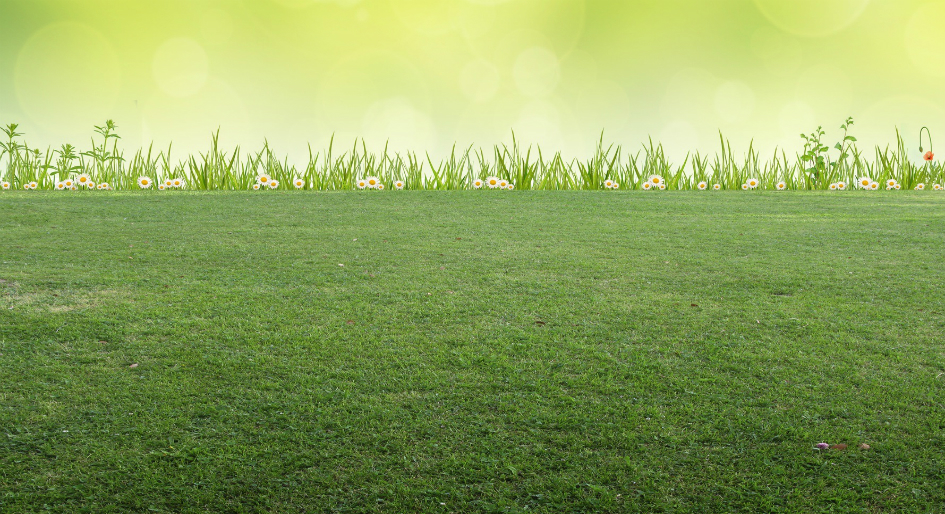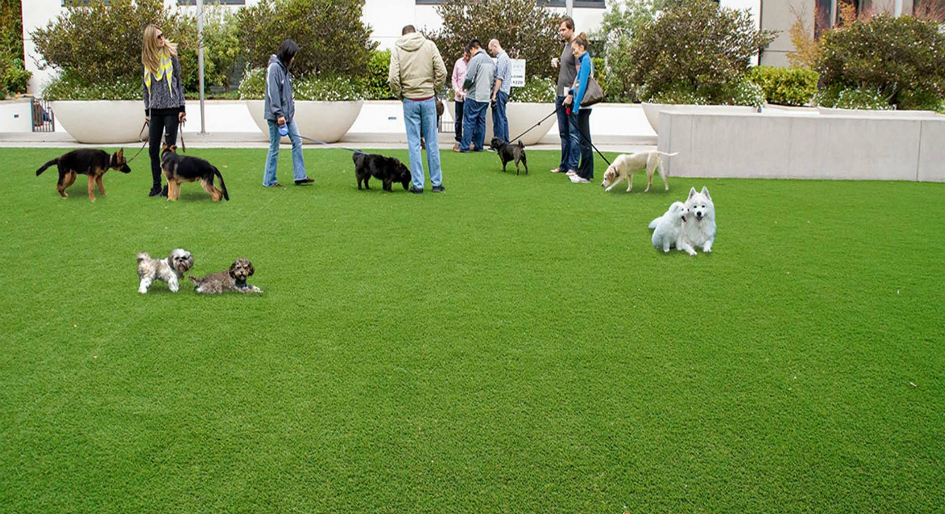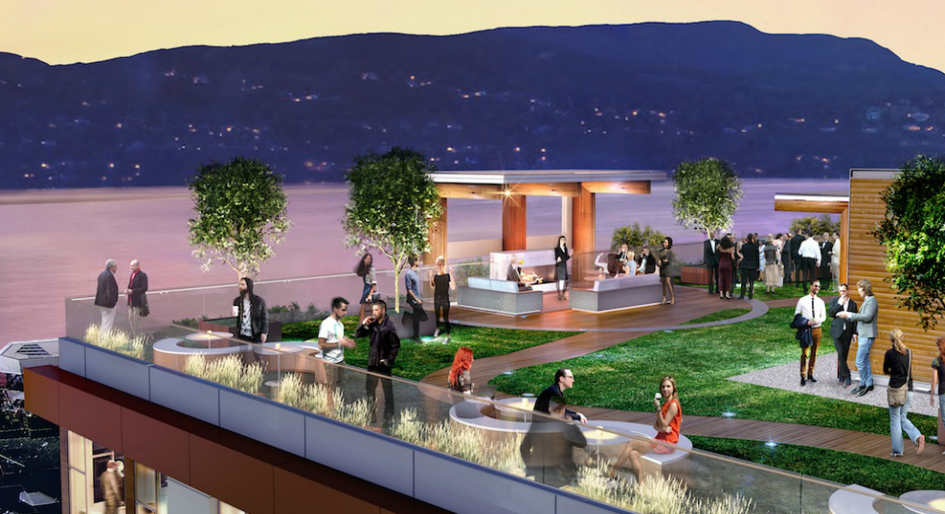Some say the grass isn’t always greener when it’s artificial, but new plant-based innovations are showing that it can be, both literally and in a sustainable way. Forces in the market are also renewing the case for synthetic turf, and maintenance is just one area experiencing its positive attributes.
Changing weather patterns, health and wellness in the built environment, space utilization and accessibility requirements are just a few trends buttering facilities into investing in this product. Natural grass smells fresh, cools the air, removes carbon dioxide from the atmosphere, absorbs rainwater and reduces noise levels; but according to some industry members, synthetic grass, which makes sense in certain instances, has many of these benefits. And maintaining it is often less costly, especially in areas where floods and drought are of increasing concern.
Here are some reasons facilities are sourcing synthetic grass and tips for optimal cleaning and maintenance.
Changing weather patterns
Extreme to minor rainfall events are becoming more common due to the warming planet, inflicting damage on cities across North America. Meanwhile, dry weather has prompted towns to tighten water restrictions and implement tiered water systems. For example, in summer 2015, Metro Vancouver moved to a Stage 3 water restriction for the first time in 12 years, which banned all non-residential lawn sprinkling with treated drinking water – water that normally comes from the region’s hoses and taps. In cases like this, water availability is scarce.
“If you’re using extra water to irrigate natural grass, that pushes your building into a higher tier of water costs,” says Mike Holdenried, national sales manager for SYNLawn, North America’s largest manufacturer and installer of synthetic landscape grass. “In some areas, you can’t water or can only water for maybe 45 minutes per week, which is not enough to sustain what people want a commercial facility to look like – lush and green.”
Natural grass can get quite dry during water restrictions, and when it becomes dry, this is a fire hazard, especially in locations that generate a lot of heat; rooftops for example. Cities with water programs in place provide incentives like tax and credit rebates to build with artificial turf, while the LEED program awards points to buildings that incorporate products that are water efficient and made from recycled and renewable materials.
Proponents of the environment are concerned about filtration and storm water management, water quality runoff and the heat-island effect. Overall, the synthetic grass industry has made strides to address these concerns in an innovative and sustainable way. For example, SYNLawn, which has been around for more than 40 years, is just one company pushing industry to be green in the face of climate change. In January 2017, the company introduced a new bio-based and environmentally renewable product made from Brazilian sugar cane that is sustainably grown under strict industrial and environmental practices that don’t rely on the carbon heavy petroleum industry. Seen as innovative to the industry, the grass also replaces Polyethylene with soy beans, so the backing is also green.
“It’s green on the top and green on the bottom, green all the way through,” adds Holdenried, who has seen a huge upswing in the market. “We stitch the product into a recycled component made from recycled pop bottles, which are 100 per cent recyclable.
Overall, their turf minimizes the heat island effect by using infrared reflectors that keep grass much cooler than artificial field products. Plus, the grass is 100 per cent permeable and capable of moving massive amounts of water through the surface – about 120 litres per square metre per hour. Water that is drained through synthetic grass can also be harvested and used for other purposes in a building.
“It drains faster than the water Mother Nature can provide,” Holdenried says. “On a rooftop, you may want a drainage pad or something underneath to move water away from wherever it is. For example, if the product is placed right on concrete, there is no real drainage happening – it’s moving off.”
Health and wellbeing
New generation artificial turf is chemical free and more real looking, not the indoor-outdoor kind from 15 years ago. It also has inherent health and wellbeing benefits that support the way the built environment is becoming more human-centric.
This more human approach is evident in programs like the WELL Building Standard, which is seeing a gradual uptake across the country. The program focuses on the health and wellbeing of occupants by addressing seven areas, from water and fitness to air quality. As facilities and office environments look for ways to incorporate healthy elements that attract and retain occupants, artificial grass can come in handy; for example, putting greens and yoga areas to address the fitness and comfort component of the standard. Synthetic turf also limits dependence on noisy carbon-emitting lawn equipment.
Space utilization
Besides the obvious health benefits, engaging and retaining tenants has also led to utilizing space more efficiently. SYNLawn recently installed its artificial grass on the 8,000-square-foot rooftop of the Okanagan Centre for Innovation in Kelowna, B.C. The facility is targeting LEED and desired a green space for people to eat lunch and commune. Rooftops, parkades, shady areas that don’t get much sun and cannot sustain natural grass, spots where buildings are too close together and pet-friendly areas all have the potential to be utilized for such green space.
Accessibility
Liability is another reason facilities are opting for synthetic grass. Most products are now compliant with regulations, such as the Accessibility for Ontarians with Disabilities Act or even the Americans with Disabilities Act, which can be even more stringent.
“Especially with something like a playground, which may be built with sand or wood chips, you cannot access these areas with a wheelchair,” Holdenried emphasizes. “Synthetic grass is stable and drains well, whereas natural grass can get wet, making it less accessible to transition through in a wheelchair.”
How to clean and maintain synthetic grass
Cleaning is the biggest part of maintaining synthetic grass. A good strategy can enhance aging and aesthetics, so it’s important to keep this grass clean, brush it periodically and not abuse it.
Cleaning
For dust, pollen and airborne pollutants, rainfall is the optimal cleaner, but an occasional water flush is beneficial in areas where rainfall is scare. For lightly soiled areas, use a sponge mop with a five per cent solution of a low sudsing household detergent in hot water, followed by a thorough rinsing with hot water. For heavily soiled areas, Holdenried suggests a user repeat the procedure above and follow with sponge mopping using a three per cent solution of household ammonia in hot water, then thoroughly rinsing with hot water.
As for stains, SYNLawn suggests removing any solid or paste-like deposits with a spatula or table knife, then blot excess liquids with paper towels, a clean cloth or dry absorbent. Synthetic fibres can resist stains, but since they are only one part of various components, cleaning agents safe for some fibres aren’t safe for others. Cleaning agents are grouped into two sets, one which can be used liberally and the other which should only be applied by rubbing a cleaner-soaked cloth to minimize penetration on the turf surface.
Most products are pet friendly, but maintenance is needed to reduce odours from animal waste. Allow waste to dry and then dispose. When rain is scarce, hose the area to clean and promote drainage of urine.
Chewing gum can be removed by freezing. Aerosol packs of refrigerant are available from most carpet cleaning suppliers. After freezing, scrape with a knife. Fungus or mould spots can be combated with a solution of one per cent hydrogen peroxide in water, sponged and then flushed with clean water.
Brushing
The amount of brushing depends on the amount of foot traffic. In high traffic areas (play areas, multiple dogs, commercial applications) matting may occur, particularly if fibres become soiled with dirt. Users should never use a brush with metal or wire bristles as this alters the fibres. Periodic cross brushing, which goes against the grain, nap or sweep of the turf, is recommended, using a brush with synthetic fibres or a Grandi Groomer.
Top photo courtesy of SYNLawn












